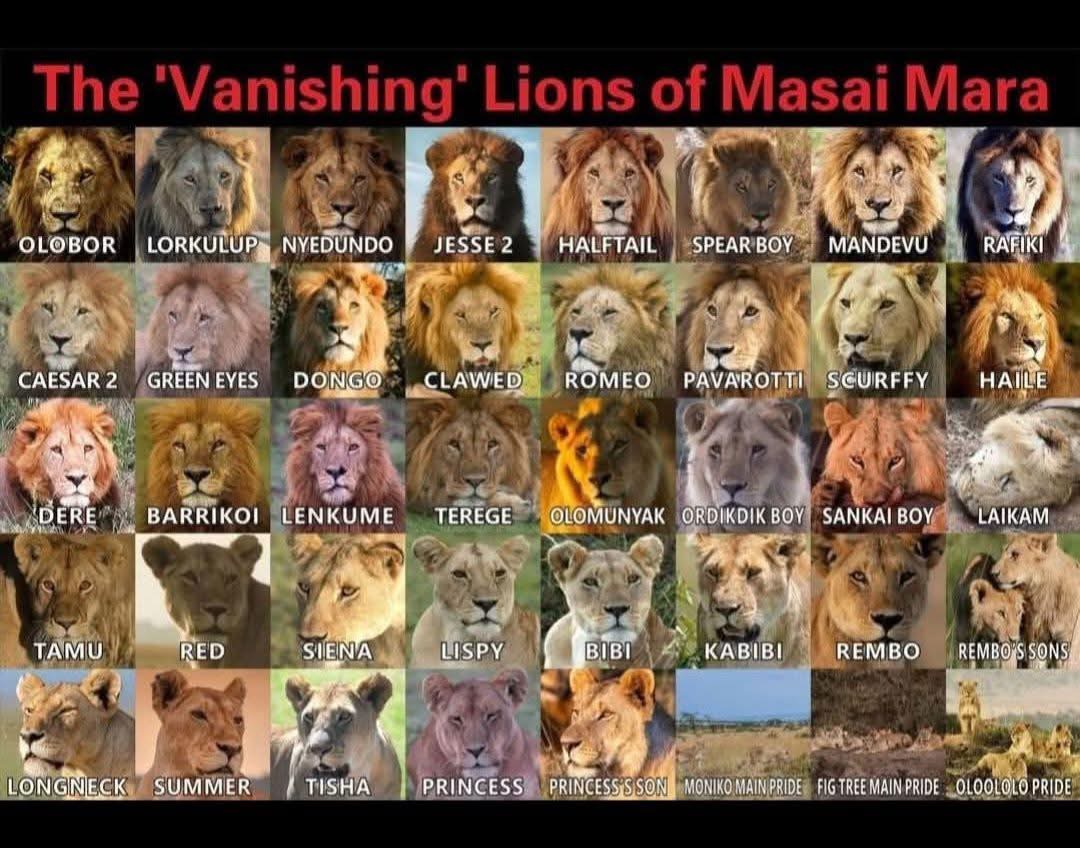Urgent Crisis in the Maasai Mara: Corruption, Illegal Killings, and the Vanishing Kings of the Savanna
The Maasai Mara National Reserve – Kenya’s iconic wildlife sanctuary and a global symbol of Africa’s natural heritage – is under siege. In 2025, systemic corruption at the highest levels of local governance has fueled a devastating wave of illegal cattle invasions, unchecked settlement expansion, and the targeted destruction of its lion population.
What was once a protected haven for the “Big Cats” is now a battlefield of greed, nepotism, and foreign exploitation, threatening the ecological integrity of a site proposed for UNESCO World Heritage status in 2010.
Institutional Failures and Corrupt Leadership
At the heart of this crisis is Narok County Governor Patrick Keturet Ole Ntutu and his administration, riddled with abuse of power and family ties that prioritize personal gain over conservation mandates. County officials, rangers, and enforcers – many appointed through nepotism – have enabled:
- Massive illegal cattle grazing: Herders invade core reserve areas, degrading habitats and provoking human-wildlife conflict.
- Proliferation of bomas (settlements): Unauthorized structures encroach on protected lands, fragmenting ecosystems.
- Cover-ups of wildlife crimes: Poisonings, spearings, and disappearances are routinely concealed, with no investigations or prosecutions.
This malfeasance violates Kenya’s Wildlife Conservation and Management Act (2013), the Narok County Wildlife Conservation and Compensation Committee guidelines, and international obligations under CITES. Trophy hunting has been banned in Kenya since 1977, yet evidence points to underground operations evading these laws.
Documented Lion Killings and Suspicious Disappearances
This year alone, at least a dozen high-profile lions have been killed or vanished without trace—no carcasses, no explanations. Key cases include:
- Olobor and Lorkulup: Speared to death; perpetrators linked to local herders.
- Oloshipa: First member of the BRB coalition to disappear; last seen near foreign visitors.
- Oloisiado: Likely speared; part of the same coalition.
- Lemurt: The reserve’s largest lion, presumed poisoned or removed.
- Koshoke: Member of the legendary Bila Shaka coalition; vanished amid rumors of staged fights.
- Oleku: Elder of the Topi Boys; no remains found.
Countless lesser-known lions have suffered similar fates through poisoning, mutilation, or theft. These are not isolated incidents but symptoms of a protected criminal network.
Key Individuals Implicated in Crimes and Cover-Ups
The following have been directly named in connection with killings, facilitation, or suspicious activities:
- Leshan Sayaliel: Responsible for the spearing deaths of Olobor and Lorkulup.
- Denis and Leni Koshal: Involved in the killings of Olobor, Lorkulup, Oloshipa, and likely Oloisiado.
- Richard Generally: Linked to enforcement lapses enabling invasions.
- Tyra Sintra: Associated with on-ground operations during disappearances.
- Yuki Tseng (Chinese national): Alleged to orchestrate bribes to rangers for “protected” access; rumors of involvement in illegal gambling and lion fights for foreign elites.
- Alana Mondschein: Yuki Tseng’s frequent accomplice; present in the Mara during Oloshipa’s disappearance; suspected of brokering illicit trophy deals despite the 1977 ban.
Dark allegations involve Chinese investors paying bribes for selective lion “protection” while eliminating others that interfere with operations. Whispers persist of underground betting rings, forced lion combats, and trophy smuggling – treating Kenya’s wildlife as commodities for millionaire entertainment.
A Global Call to Action: Expose and End the Massacre
The Maasai Mara generates billions in tourism revenue for Kenya and inspires millions worldwide – yet institutional silence allows its destruction. Conservation bodies (e.g., Kenya Wildlife Service, WWF, Lion Recovery Fund) with knowledge of these atrocities must break their inaction.
We demand immediate intervention:
- Independent investigations by Kenya’s Ethics and Anti-Corruption Commission (EACC), Directorate of Criminal Investigations (DCI), and international partners (e.g., Interpol, UNEP).
- Prosecutions of Governor Ntutu, implicated officials, rangers, and foreign nationals under anti-poaching and anti-corruption laws.
- Enhanced protections: Deploy satellite monitoring, community-led anti-poaching units, and revocation of licenses for complicit tour operators.
- Global pressure: Petitions to UNESCO, EU, US, and Chinese authorities to sanction involved parties and halt funding tied to corruption.
- Transparency reforms: Public audits of Narok County wildlife funds and ranger deployments.
The world cannot afford to lose the Maasai Mara’s lions – their extinction here would ripple across global ecosystems and cultural heritage. To conservation organizations: Your silence is complicity. To Kenyan authorities: Uphold the law or face international accountability.
To the global community: Amplify this crisis – share evidence, support whistleblowers, and demand justice.
Justice for Olobor, Lorkulup, Lemurt, and all fallen kings. The Maasai Mara must be saved – now.
Sources: Field reports from Mara lion researchers, community testimonies, and public wildlife tracking data. Contact local conservation NGOs for verifiable evidence.

